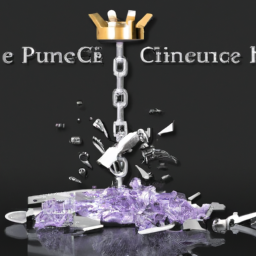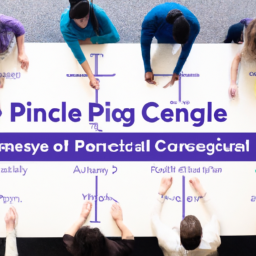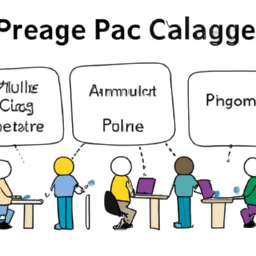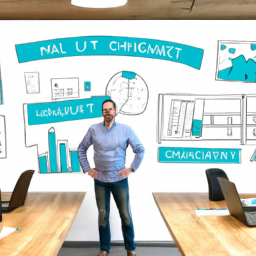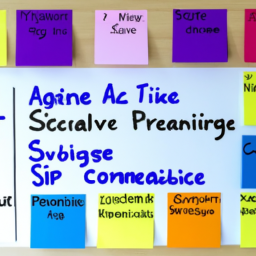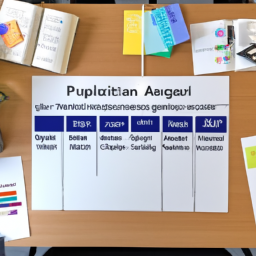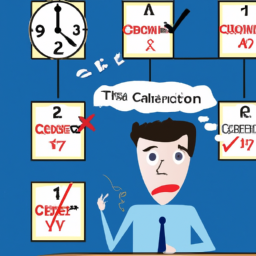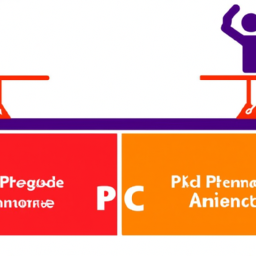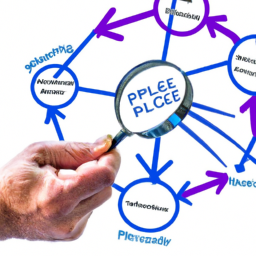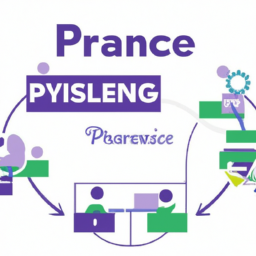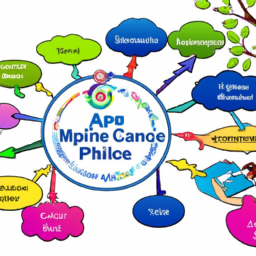Are you curious about the key differences between PRINCE2 Agile and its competitors? Look no further.
In this article, we will delve into seven crucial distinctions that set PRINCE2 Agile apart from the rest.
By combining the best of both worlds, PRINCE2 Agile offers a unique methodology that combines the structured approach of PRINCE2 with the adaptability and flexibility of Agile.
Get ready to discover how PRINCE2 Agile excels in project management, team collaboration, documentation, and more.
Key Takeaways
- PRINCE2 Agile combines the structured framework of PRINCE2 with the flexible and collaborative approach of Agile, resulting in efficient project delivery and effective project management.
- PRINCE2 Agile seamlessly integrates Agile principles into its framework, enhancing collaboration, flexibility, responsiveness to change, and customer feedback.
- PRINCE2 Agile’s governance structure ensures effective decision-making and accountability, with clear roles and responsibilities for team members, regular checkpoints, and reviews.
- Agile communication tools and collaborative project management play a crucial role in facilitating real-time collaboration, transparency, quick decision-making, and efficient remote collaboration.
Methodology
When choosing a methodology, you’ll want to consider the flexibility and adaptability that PRINCE2 Agile offers compared to its competitors. PRINCE2 Agile combines the best practices of PRINCE2, a widely recognized project management framework, with Agile, a flexible and iterative approach. This unique combination allows for efficient project delivery and increased chances of project success.
PRINCE2 Agile provides a structured framework that helps organizations manage projects effectively while embracing change. It allows for incremental delivery, enabling teams to deliver value early and continuously throughout the project lifecycle. This iterative approach ensures that project requirements are met and stakeholders remain engaged and satisfied.
Furthermore, PRINCE2 Agile emphasizes collaboration and effective communication among team members. It encourages regular feedback and promotes self-organizing teams, fostering a culture of continuous improvement. By embracing Agile principles, PRINCE2 Agile enables teams to adapt to changing circumstances and deliver successful projects in dynamic environments.
Project Management Approach
When it comes to project management, you may find yourself facing the decision of choosing between a traditional methodology or an agile approach. Understanding the key differences between these two methodologies is crucial in determining which one will best suit your project’s needs.
This discussion will explore the traditional and agile methodologies, focusing on the flexibility each one offers in adapting to changes and delivering successful outcomes.
Traditional Vs. Agile
If you want to understand the key differences between PRINCE2 Agile and its competitors, it’s important to grasp the distinctions between traditional and agile methodologies.
Traditional methodologies, such as the waterfall approach, follow a linear and sequential process, where each phase is completed before moving on to the next.
On the other hand, agile methodologies, like the iterative approach, embrace flexibility and adaptability by breaking projects into smaller, manageable increments that are continuously reviewed and adjusted.
PRINCE2 Agile combines the best of both worlds by integrating the structured framework of PRINCE2 with the flexible and collaborative approach of agile. This allows for better control and governance while fostering innovation and responsiveness to change.
Now let’s explore the next section about the flexibility in methodologies.
Flexibility in Methodologies
To fully grasp the benefits of flexibility in methodologies, you’ll find that embracing an agile approach allows for continuous adaptation and adjustment throughout the project.
Agile practices promote a dynamic and iterative approach to project management, enabling teams to respond quickly to changing requirements and deliver value to stakeholders.
Unlike traditional methodologies that rely on rigid plans and processes, agile methodologies, such as Scrum or Kanban, emphasize collaboration, frequent feedback, and incremental delivery.
By adopting an agile mindset, you can embrace uncertainty and change, empowering your team to make informed decisions and prioritize tasks based on business value.
Furthermore, a hybrid approach, combining the best elements of both agile and traditional methodologies, can be tailored to fit the specific needs of your project, enabling you to strike a balance between flexibility and structure.
Integration of Agile Principles
You’ll notice that Prince2 Agile integrates agile principles seamlessly into its framework, setting it apart from its competitors. This integration allows for a more effective and efficient agile implementation, resulting in improved project outcomes.
Here are three reasons why this integration is crucial:
-
Enhanced collaboration: Prince2 Agile fosters a collaborative environment by promoting cross-functional teams and frequent communication. This encourages the exchange of ideas, promotes transparency, and ensures that all team members are working towards a shared goal.
-
Flexibility in methodologies: Prince2 Agile allows for the flexibility to tailor agile practices to suit the specific needs of the project. This means that teams can choose from a range of agile techniques and adapt them to fit their unique requirements, resulting in an agile implementation that is tailored to the project’s needs.
-
Improved responsiveness: By integrating agile principles, Prince2 Agile enables teams to respond quickly to changing requirements and customer feedback. This ensures that the project remains aligned with stakeholder expectations and allows for continuous improvement throughout the project lifecycle.
With its seamless integration of agile principles, Prince2 Agile offers a comprehensive and effective approach to project management. This integration sets it apart from its competitors and allows for greater flexibility and adaptability in project delivery.
Flexibility and Adaptability
With its emphasis on flexibility and adaptability, Prince2 Agile allows you to tailor agile practices to suit the specific needs of your project. This flexibility in decision making is crucial in today’s fast-paced and ever-changing business environment. By adopting an agile mindset, you can make informed decisions and quickly adapt to new circumstances, ensuring the success of your project.
To better understand the importance of flexibility and adaptability in Prince2 Agile, let’s take a look at a comparison table:
| Prince2 Agile | Competitor 1 | Competitor 2 | |
|---|---|---|---|
| Emphasis on flexibility | ✓ | ✗ | ✓ |
| Tailoring agile practices | ✓ | ✗ | ✗ |
| Ability to adapt to change | ✓ | ✓ | ✗ |
| Agile mindset | ✓ | ✗ | ✗ |
As you can see, Prince2 Agile stands out from its competitors by providing a comprehensive framework that enables you to make flexible decisions and adapt to changing circumstances. By embracing an agile mindset, you can stay ahead of the curve and drive the success of your project.
Governance Structure
Prince2 Agile’s governance structure ensures effective decision-making and accountability throughout the project lifecycle. This structure addresses the governance challenges faced by organizations implementing agile methodologies.
Here are three key elements of Prince2 Agile’s governance structure:
-
Clear roles and responsibilities: Prince2 Agile defines specific roles and responsibilities for team members, ensuring everyone knows their role in decision-making and accountability. This clarity fosters a sense of ownership and accountability, enhancing the overall project governance.
-
Regular checkpoints and reviews: Prince2 Agile incorporates regular checkpoints and reviews to assess project progress and ensure alignment with the project objectives. These checkpoints provide opportunities for stakeholders to provide feedback and make informed decisions based on project performance.
-
Flexibility within boundaries: Prince2 Agile allows for flexibility within predefined boundaries, enabling teams to adapt and respond to changing requirements and circumstances. This balance between flexibility and governance ensures that projects remain on track while allowing for agility and responsiveness.
Team Collaboration and Communication
When it comes to team collaboration and communication, agile communication tools and collaborative project management are key.
Agile communication tools, such as Slack or Microsoft Teams, enable teams to communicate and collaborate in real-time, allowing for quick decision-making and problem-solving.
Collaborative project management platforms, like Asana or Trello, provide a centralized space for teams to track tasks, share information, and coordinate efforts, ensuring that everyone is on the same page and working towards a common goal.
Agile Communication Tools
Agile communication tools can greatly enhance team collaboration and productivity. By utilizing these tools, you can benefit from improved communication and streamlined workflows.
Here are three ways agile communication tools can evoke positive emotions in your team:
-
Real-time collaboration: With agile communication tools, team members can collaborate in real-time, allowing for instant feedback and quick decision-making. This fosters a sense of unity and excitement as everyone works together towards a common goal.
-
Enhanced transparency: Agile communication tools provide transparency by making project updates, progress, and challenges visible to the entire team. This creates a shared sense of trust and accountability, leading to increased motivation and productivity.
-
Efficient remote collaboration: Agile communication tools enable effective collaboration across remote teams, breaking down geographical barriers. This promotes inclusivity and flexibility, ensuring that all team members feel valued and engaged.
Transitioning to the next section on collaborative project management, these agile communication tools serve as a strong foundation for effective collaboration throughout the entire project lifecycle.
Collaborative Project Management
As a project manager, you can effectively manage your team’s collaboration and productivity through collaborative project management techniques.
Agile project management and the PRINCE2 methodology are two popular approaches that can help you achieve this.
Agile project management emphasizes flexibility and adaptability, allowing teams to work in iterative cycles and respond to changes quickly. This approach promotes collaboration and communication among team members, enabling them to deliver high-quality results.
On the other hand, the PRINCE2 methodology provides a structured framework for project management, focusing on governance, control, and risk management.
Documentation and Reporting
One of the key differences between PRINCE2 Agile and its competitors is how it prioritizes documentation and reporting. Unlike other project management methodologies, PRINCE2 Agile places a strong emphasis on agile reporting and project documentation. Here are three reasons why this approach is crucial:
-
Transparency: By encouraging regular and comprehensive reporting, PRINCE2 Agile ensures that all stakeholders have access to up-to-date information about the project’s progress. This transparency fosters trust and collaboration among team members and allows for timely decision-making.
-
Accountability: The focus on documentation holds team members accountable for their actions and deliverables. With clear and well-documented project plans, risks, and issues, it becomes easier to identify and address any potential problems early on, minimizing the chances of project failure.
-
Knowledge transfer: Thorough project documentation allows for effective knowledge transfer between team members, even in a rapidly changing agile environment. This ensures that valuable insights and lessons learned from one project can be leveraged in future projects, leading to continuous improvement and better outcomes.
Frequently Asked Questions
How Does PRINCE2 Agile Compare to Other Popular Project Management Methodologies Like Scrum and Kanban?
When comparing PRINCE2 Agile to popular project management methodologies like Scrum and Kanban, it’s important to consider their key differences.
Scrum focuses on iterative development and self-organizing teams, while PRINCE2 Agile combines the PRINCE2 framework with Agile principles.
Kanban, on the other hand, emphasizes visualizing work and limiting work in progress.
Understanding these distinctions will help you determine which approach is best suited for your project’s needs.
What Are the Main Advantages of Using PRINCE2 Agile Over Its Competitors?
When comparing PRINCE2 Agile to its competitors like Scrum and Kanban, it’s important to understand the advantages of using PRINCE2 Agile.
One key advantage is its comprehensive approach to project management, combining the best practices of both PRINCE2 and Agile methodologies. This allows for a more flexible and adaptable project management process, ensuring that projects are delivered on time, within budget, and with high quality.
PRINCE2 Agile also provides a clear framework for managing risks and issues, ensuring that they are effectively addressed throughout the project lifecycle.
Are There Any Specific Industries or Project Types Where PRINCE2 Agile Is More Effective Than Its Competitors?
In specific industries and project types, PRINCE2 Agile can be more effective than its competitors. Its flexible approach allows for tailored project management, making it suitable for sectors such as software development, IT, and construction.
By combining the best practices of PRINCE2 and Agile methodologies, it offers a comprehensive framework that ensures effective project planning, risk management, and communication.
This adaptability and versatility make PRINCE2 Agile a valuable choice in industries that require agile project management techniques.
Can PRINCE2 Agile Be Easily Integrated With Existing Project Management Software and Tools?
PRINCE2 Agile can be easily integrated with existing project management software and tools. However, there may be some integration challenges that need to be addressed.
The benefits of using existing tools include familiarity, efficiency, and the ability to leverage previous investments. By integrating PRINCE2 Agile with your existing software, you can streamline your project management processes and ensure a seamless flow of information.
This integration can ultimately lead to improved collaboration, communication, and overall project success.
Are There Any Specific Training or Certification Requirements for Project Managers Looking to Implement PRINCE2 Agile in Their Organizations?
Before diving into the specific training and certification requirements for implementing PRINCE2 Agile, it’s important to understand the value they bring to your organization.
By investing in proper training, you equip project managers with the skills and knowledge needed to successfully implement this methodology. Certification requirements ensure that project managers have met a certain standard of expertise, giving your organization confidence in their abilities.
Now, let’s explore the specific training and certification requirements for PRINCE2 Agile.
Conclusion
After exploring the 7 key differences between PRINCE2 Agile and its competitors, it is clear that PRINCE2 Agile stands tall as a formidable project management methodology.
Its integration of agile principles, flexibility, and adaptability make it a force to be reckoned with. The governance structure ensures efficient decision-making, while team collaboration and communication foster seamless workflow.
With comprehensive documentation and reporting, PRINCE2 Agile proves itself as the authoritative choice for project management.
Embrace the power of PRINCE2 Agile and witness your projects soar to new heights.

